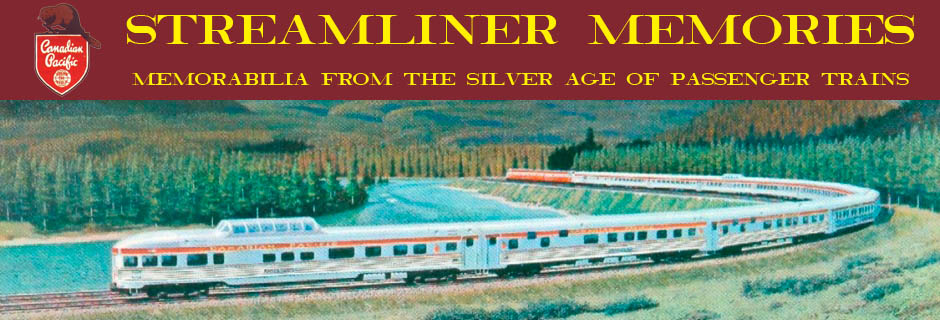Experience with the City of Portland and City of Los Angeles had proven to the Union Pacific that its first-generation streamliners were too small for anything but local service. So it cancelled its planned fourth train, the M-10003, and ordered four longer trains with more powerful, redesigned locomotives. Though these were far from motorcars, it initially retained the M-1000x numbering system.
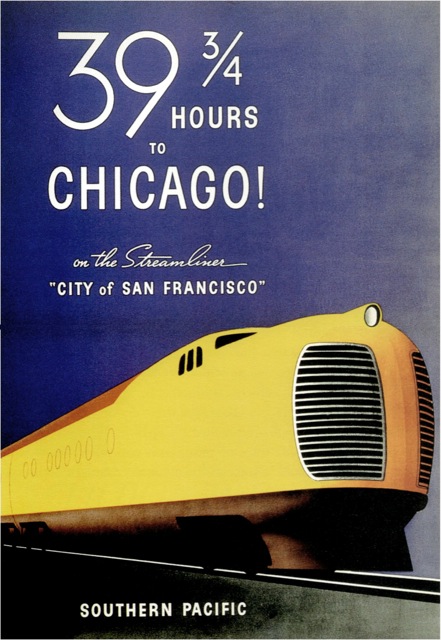
Beginning on June 14, 1936, the M-10004 became the first City of San Francisco, running over the Chicago & North Western from Chicago to Omaha and the Southern Pacific from Ogden to Oakland. Its “automobile-style” locomotive featured shields from all three railroads and was detachable from the rest of the train. The locomotive was in two units, each one with a General Motors 1,200-HP V-16 Diesel.
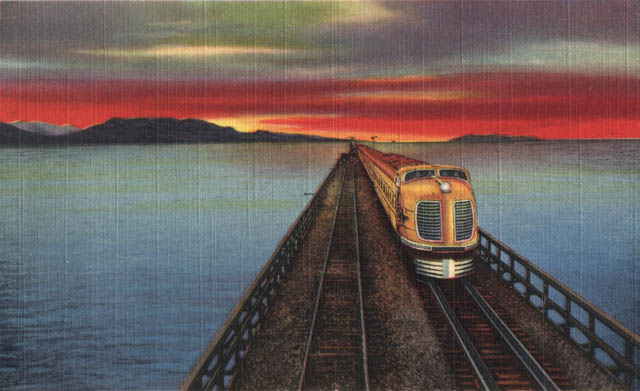
Except for the baggage car, all of the other cars on the train were articulated, and included two coaches, a diner, five sleeping cars, and an observation lounge. Like the City of Portland and City of Los Angeles, this train operated five times a month on a 39-3/4-hour schedule.
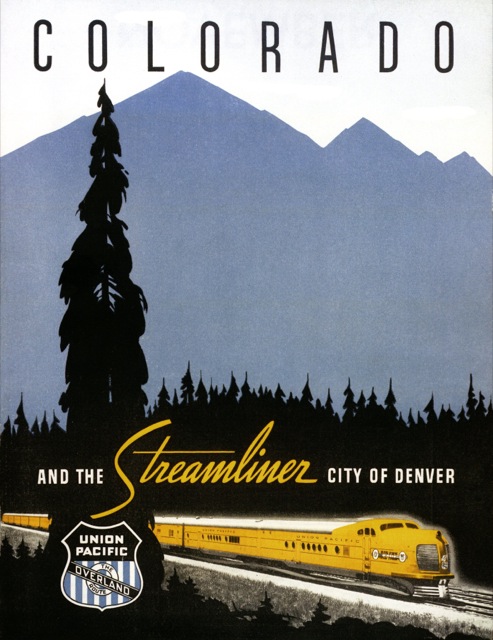
Just four days later, the M-10005 and M-10006 started daily overnight service between Chicago and Denver. The City of Denver was thus Union Pacific’s first, and for many years only, daily overnight streamliner. This is probably because the Chicago-Denver route was the only one over which the Union Pacific directly competed with the Burlington and its Zephyrs. Although the M-10004 had tapered sides similar to the M-10000 through M-10002, the M-10005 and M-10006 had straight sides, thus avoiding the narrow-bed problem.
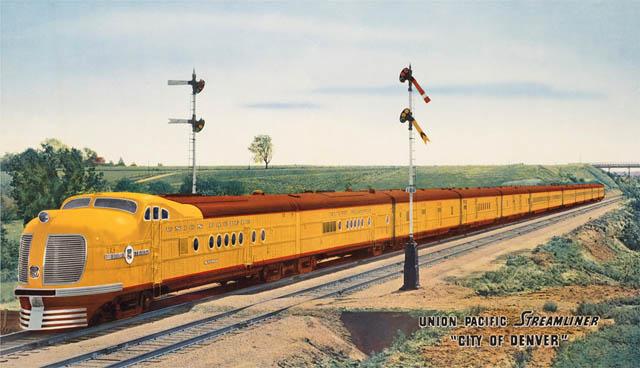
The City of Denver train in this postcard retains the number M-10006 and its brown roof. Click here to download a PDF of a slight variation on this postcard issued by the Union Pacific.
The City of Denvers were shorter trains than the City of San Francisco, with two coaches but just three sleeping cars. In addition to a diner and observation lounge, they also had a club car at the front of the train (meaning open to coach passengers) called the Frontier Shack.
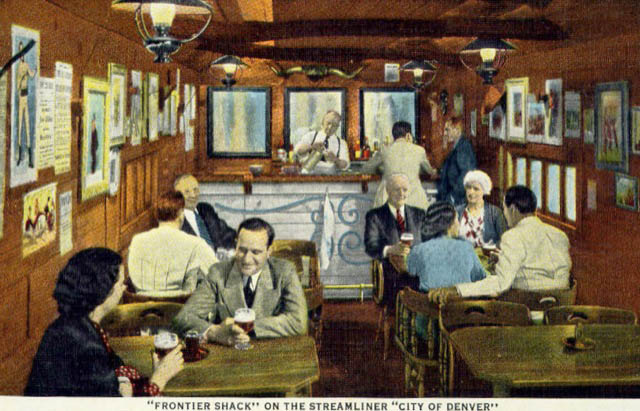
Despite its lower number, the final second-generation streamliner, the M-10003, was built last and had the same vertical side-profile as the M-10005 and M-10006. Rather than use it to increase service on one of its transcontinental routes, the Union Pacific kept it as a City of Denver spare in case one of the other trains needed service.
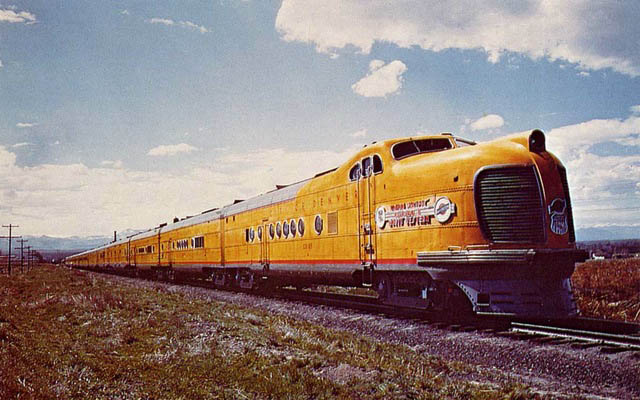
In this photo, the M-10005 City of Denver has been renumbered CD-05 and its roof has been repainted harbor mist grey, adopting the color scheme used in nearly all future UP streamliners.
These trains were popular, yet cannot be considered a success. They retained the smaller profile of the early Union Pacific streamliners, which left passengers, especially in the sleeping cars, cramped. The articulated car sets made it difficult if not impossible to expand or contract train sizes when demand changed. Plus, the 1,200-HP engine used in the locomotives was not General Motors’ best work. The Union Pacific scrapped all of these trains by 1953, less than 17 years after they entered service. By comparison, the Burlington operated the original Zephyr for more than 25 years, donating it to the Chicago Museum of Science & Industry in March, 1960, after more than 3.2 million miles of service.
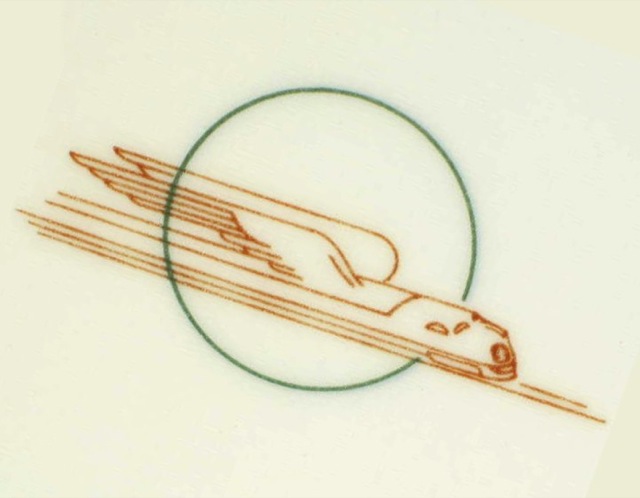
Ironically, although the Union Pacific only owned four automobile-style locomotives, this became the enduring image of UP streamliners until Amtrak took over in 1971. Above is the “winged streamliner” logo as used on Union Pacific china through the early 1970s. Below is the same logo on a headrest cover that once graced a coach seat on one of the City trains.
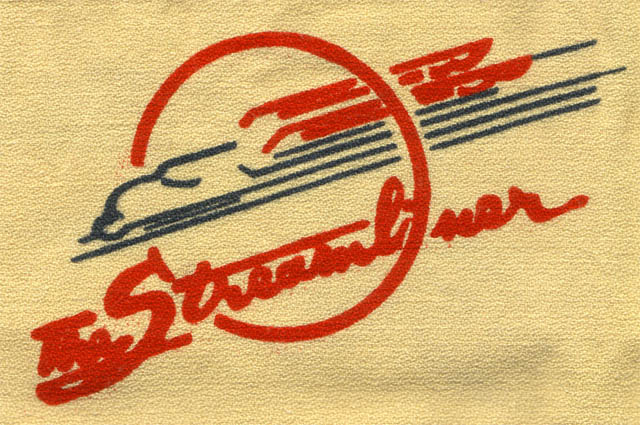
Delivered in 1937, the third generation of streamliners addressed many of the problems of the first two generations. Nominally fourteen cars long (plus the three locomotives), the two trains had cars articulated in pairs, making it easier to add or delete pairs as demand warranted. The cars also had the same full profile as Santa Fe’s streamlined cars, meaning sleeping car patrons no longer had to worry about narrow beds.
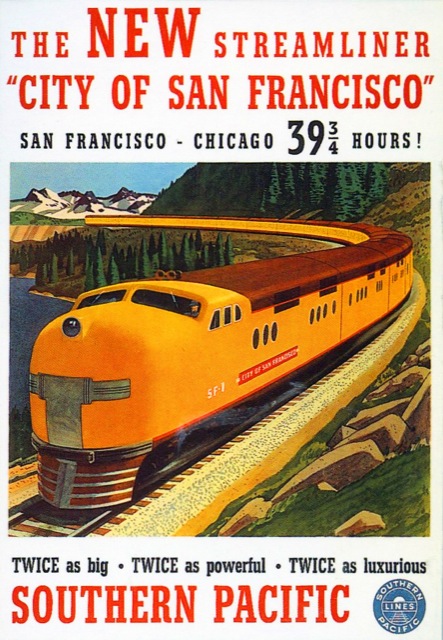
The trains were pulled by three-unit engines designated E2s. These were mechanically similar to the Santa Fe’s E1s, with two 900-HP Diesels for a total of 5,400-HP in all three locos. The lead locomotives featured a smooth face that was slightly bulbous, sometimes known as bulldog-style, instead of slanted like the E1s.
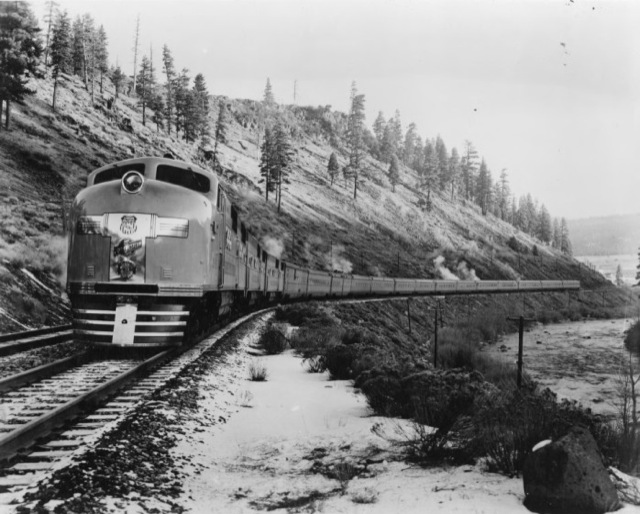
Click to download a PDF of a color postcard based on this black-and-white photo of the City of San Francisco in the Sierra Nevada.
With these trains, the Union Pacific finally gave up on the “motorcar” numbering system and numbered one set of new locomotives LA-1, -2, and -3 (for the City of Los Angeles) and the other SF-1, -2, and -3 (for City of San Francisco). The City of Denver trains were also renumbered to CD-05 and CD-06. COLA included two coaches, seven sleepers, a baggage-dorm, two lounge cars, and an articulated diner-kitchen car. COSF was identical expect, for some reason, had only one coach and eight sleepers.
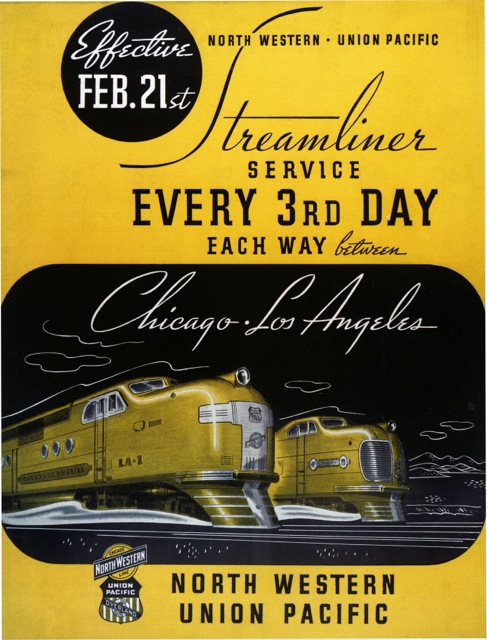
When these two trains were delivered, the M-10004, which had been the City of San Francisco, became the LA-4, allowing the Union Pacific to double service on the City of Los Angeles route, with ten “sailings” a month. Advertising showed the profiles of both the automobile-style and bulldog-style locomotives for the City of Los Angeles.
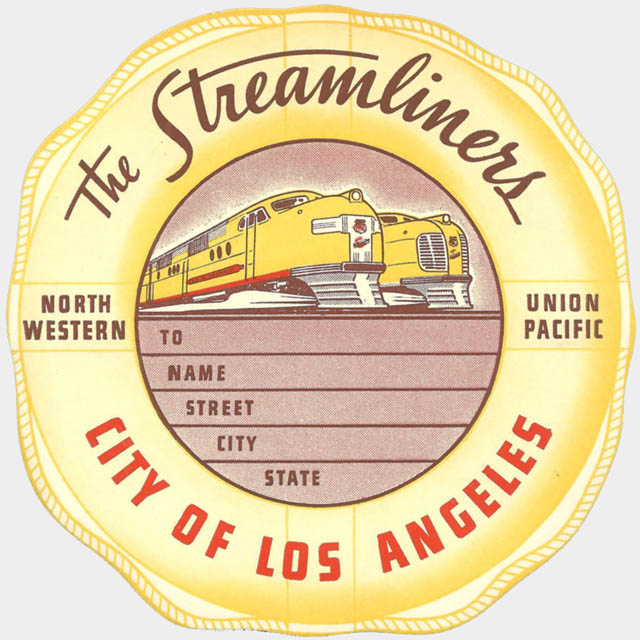
In August, 1939, vandals derailed the City of San Francisco in Nevada, killing 24 people and demolishing five of the seventeen cars. The Union Pacific reshuffled its trains, transferring some cars from the City of Los Angeles and ordering new ones.
The Union Pacific would receive one more delivery of trains before the war, allowing it to double service on the City of San Francisco route to 10 times a month and replace the former M-10004/LA-4 with a full-sized train. These two new trains were powered by E6 locomotives, whose power ratings had been boosted to 2,000-HP. Although the railroad could have used the LA-4 to double service on the City of Portland route, it instead replaced the M-10002 on the Portland run with the M-10004, and put the M-10002 in Portland-Seattle service for a short time before scrapping it. As a result, service on the City of Portland remained at five trains a month until after the war.
The Union Pacific replaced the M-10004 in 1947 and scrapped it in 1951. The City of Denvers, the last of the M-1000x trains, were retired and scrapped in 1953.
